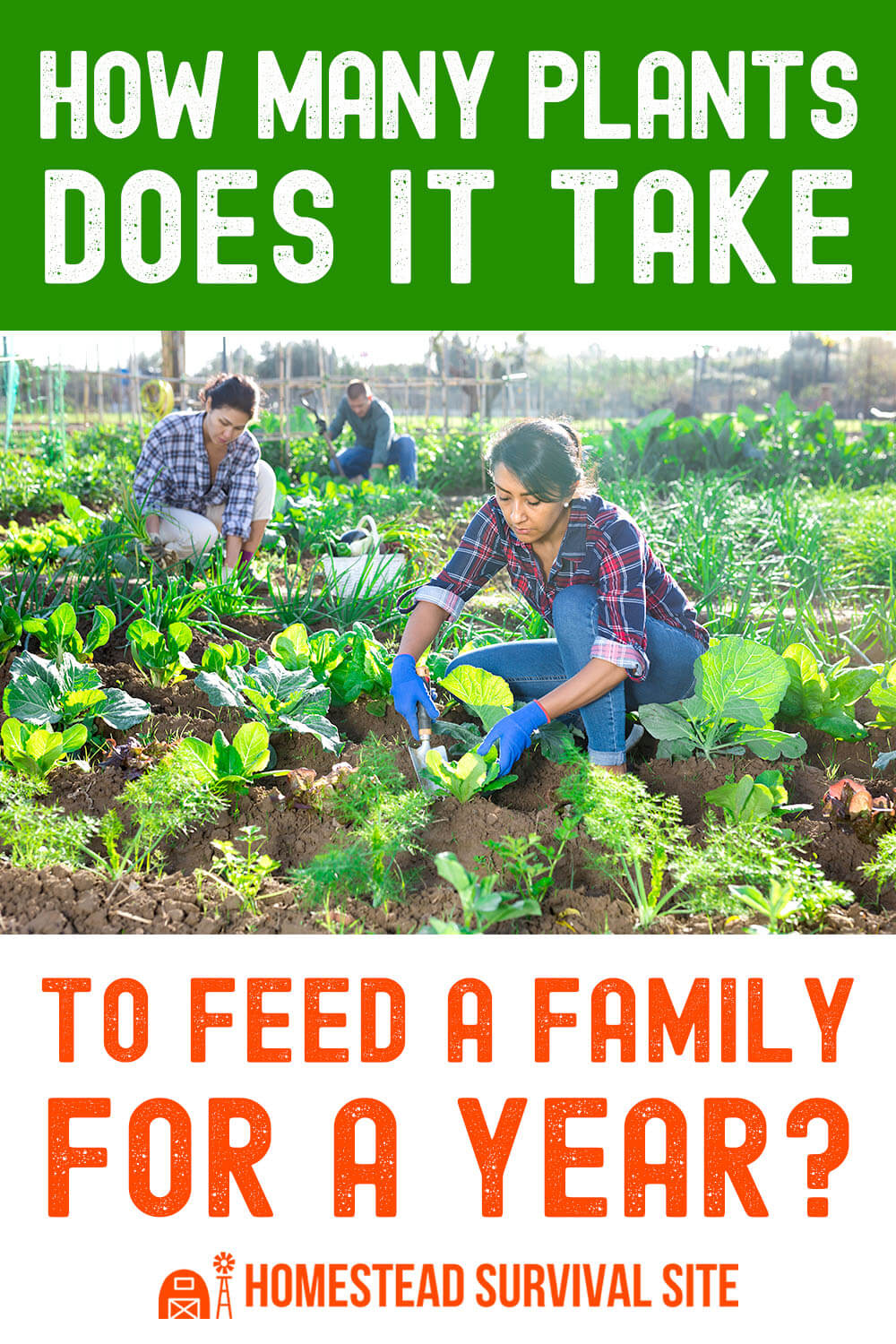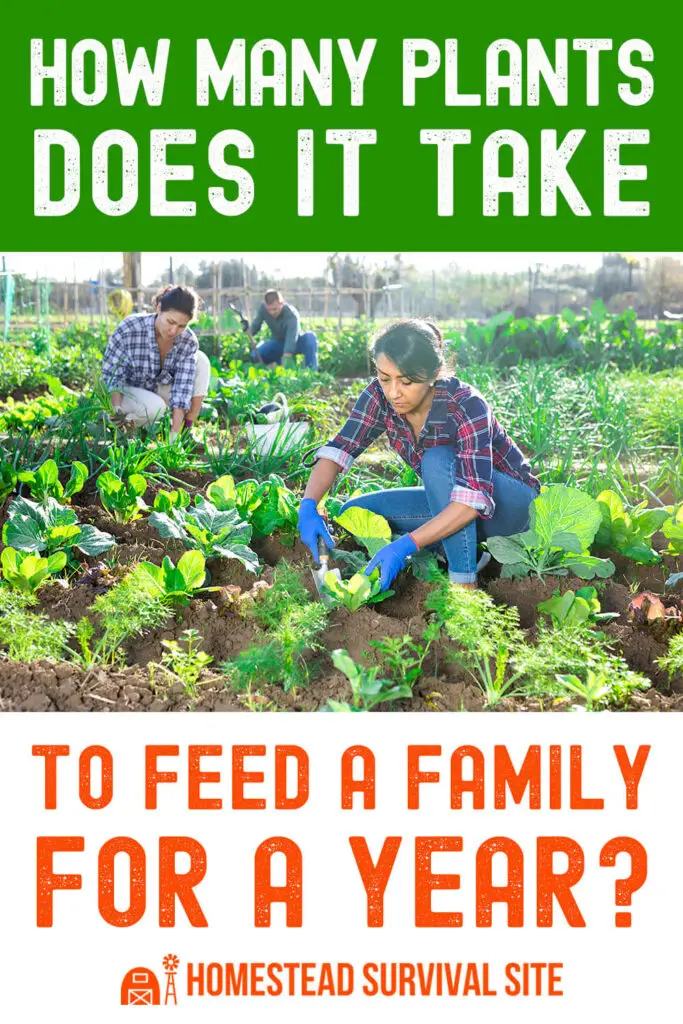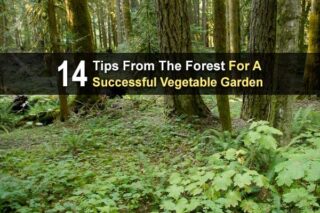Estimated reading time: 6 minutes
Would you believe me if I told you that you’re capable of growing the plants needed to feed your family for an entire year? No, I’m not crazy – well, not usually – but I’m on the same journey as you, looking to be self-sufficient and grow what my family needs to survive.
Now, every family is of a different size. For example, I have four kids, which plops my family into the “larger family” category. You might not have kids. Everyone’s situations are different, so this plan won’t be perfect for everyone.
You have to think about food likes and dislikes as well as food allergies. For example, if you really dislike peppers and no one in your family eats peppers, it’s not necessary to add them to your garden. If your child is allergic to corn, swap that space out for more of what you do love. Every plan is adjustable and flexible. Diversity is the spice of life, right?
Want to save this post for later? Click Here to Pin It on Pinterest!
How to Pick the Right Plants
Before you make your plan, think about what you buy from the store. Don’t forget to consider fruit as well! Fruit trees feel complicated, but most people have enough space to add a few dwarf fruit trees and some berry bushes.
Once you write out what you typically buy, think about how much you purchase of that particular item. For example, my family of six needs at least 10 pounds of potatoes for two weeks. We love fries and baked potatoes.
Now is the time to really think about your family and what you need. Don’t forget about herbs, garlic, and onions. They aren’t complicated to grow, and herbs can make or break a dish.
How Many Plants to Grow For a Family of Four
This chart is based on the assumption that you will be preserving the harvest. Preserving requires more plants than fresh eating, but most people don’t live in a climate that allows them to grow year-round vegetables.
| Crop | Harvest in Pounds Needed | Plants Required |
| Artichoke | 12 | 6 |
| Asparagus | 24 | 16 |
| Basil | 3 | 6 |
| Beets | 40 | 80 |
| Broccoli | 32-40 | 30-40 |
| Brussel Sprouts | 24 | 22 |
| Cabbage | 40-60 | 20 |
| Carrots | 40-60 | 120 |
| Cauliflower | 32-40 | 24 |
| Celery | 16 | 32 |
| Cherry Tomatoes | 68 | 35 |
| Cilantro | 2 | 5 |
| Corn | 125-240 | 125-200 |
| Cucumbers | 40-60 | 24 |
| Dill | 1 | 12 |
| Eggplant | 16 | 8 |
| Garlic | 8 | 64 |
| Kale | 4 | 4 |
| Leek | 12 | 60 |
| Lettuce | 24 | 42 |
| Lima Beans (bush) | 20 | 165 |
| Melons | 24 | 7 |
| Onions | 32 | 96 |
| Parsley | 1 | 6 |
| Parsnips | 12 | 36 |
| Peas | 20-40 | 120 |
| Peppers | 12 | 15 |
| Potatoes | 200-400 | 100 |
| Pumpkins | 40 | 8 |
| Radish | 15 | 60 |
| Snap Beans (Bush) | 32-60 | 150 |
| Soy Beans | 60 | 144 |
| Spinach | 14 | 60 |
| Summer Squash | 40 | 14 |
| Strawberries | 52 | 23 |
| Sweet Potatoes | 12 | 11 |
| Tomatoes | 80-160 | 40 |
| Turnips | 20 | 54 |
| Watermelons | 48 | 5 |
| Winter Squash | 24 | 5 |
What About Grains?
If you noticed, I didn’t include grains to this list. That’s because most people don’t have the amount of space required to grow enough grains to feed a family of four.
To grow a bushel of wheat, which equals 60 pounds of wheat berries, you need about 1,000 square feet. A bushel of wheat is enough to bake around 90 loaves of bread, but that’s not including pasta, crackers, and other goods that need wheat.
So, devoting a simple garden bed to wheat isn’t enough for a family of four. If you have an extra acre of land, consider devoting it to wheat or other grains.
You should also consider adding more corn. You can dry corn and grind it into cornmeal and grits. It can be used as chicken feed, and corn does well in small spaces. Plus, you can use it as a succession plant if you get an early maturing variety.
Maximize With Succession Planting
You’re probably thinking, hold up! How can I grow all of this at one time? The answer is – succession planting (see my article about it). It’s a gardening secret that lets you produce extra pounds of food in the same space, and it’ll help feed your family.
Not all plants can be succession planted, but many can. Let me explain how this works.
A few weeks before your final frost date, you can start planting things such as carrots, spinach, lettuce, and cabbage. Instead of planting everything at one time and waiting for it to grow to maturity, you plant a few rows or plants.
Then, in 2-3 weeks, you do another planting. You continue this process throughout your entire growing season. Throughout the process, you’ll end up with several stages of plants – harvesting, growing, and new plants. You’ll always have fresh lettuce available and more growing behind it.
You can use succession planting with:
- Asian Greens
- Beets
- Carrots
- Corn
- Cucumbers
- Lettuce
- Melons
- Peas
- Radishes
- Spinach
- Turnips
If you want to use succession planting, it’s best to pick early maturing varieties. I usually select carrots that harvest within 60 days, and I use the earliest peas and radishes possible. Compare the days of maturity when picking the plants for your garden.
Certain plants, like tomatoes, peppers, and potatoes, don’t work well as succession plants. Instead, you do need to plant the right amount at one time to get the harvest desired.
Fruits and More
Don’t forget that you can add fruits to your garden. A single dwarf apple tree can produce 3 to 6 bushel of apples, equaling around 120 to 240 pounds of apples. Dwarf trees only take a few short years to produce and require less space.
Consider adding a raspberry patch if you have space. 25 raspberry plants would produce around 50 quarts of raspberries!
Growing enough food for a family of four takes a lot of work and dedication, along with hours in the garden. However, food and financial freedom come with it. You can rest assured that, no matter what comes your way, you can feed your family. The peace of mind is worth the work.
Like this post? Don't forget to Pin It on Pinterest!












Thanks for the info 😊
Do you have the numbers to show how many calories are produced for each of the plantings suggested? The total number of calories?
Has anyone tried adapting this to a roof top garden or apartment balconies? A group of neighbors growing on a micro-scale could perhaps trade a barrel-full of potatoes for other produce. How many pounds of produce from a dwarf apple tree (grown in barrel)?
Thank you for sharing this. We had no clue how much we should really grow.